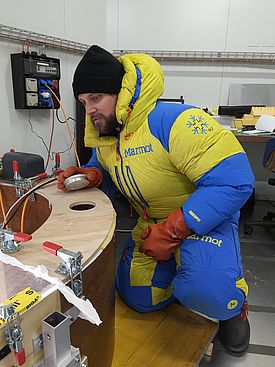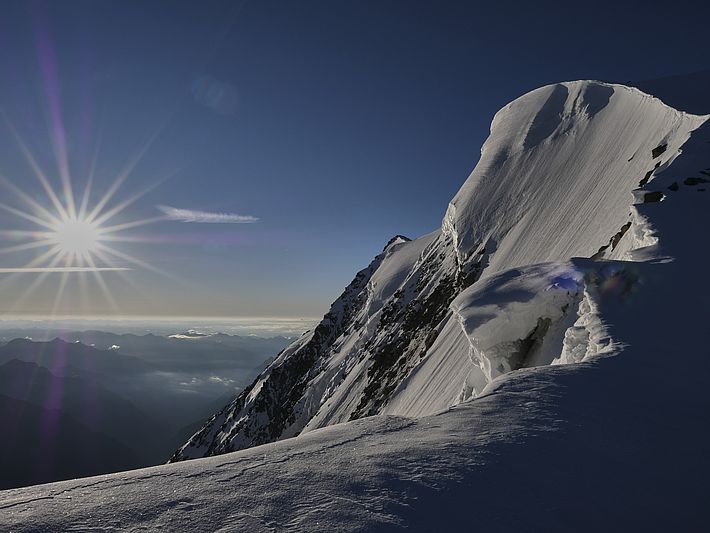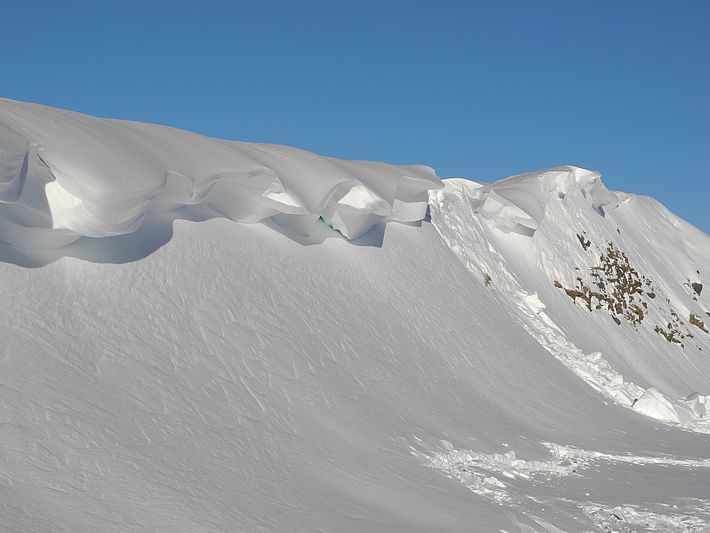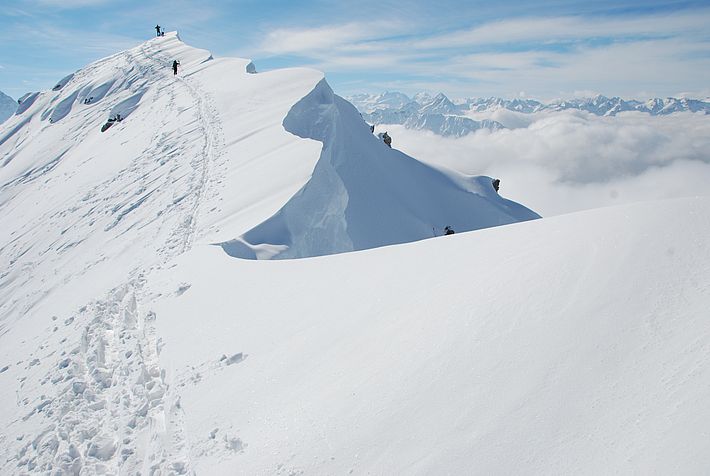21.03.2023 | Jochen Bettzieche | News SLF
Snow cornices may be a popular subject for photos, but they are treacherous. They can break off, dragging hikers, mountaineers and backcountry skiers down with them. Occasionally they even trigger avalanches. To better assess the hazards they pose, SLF researchers carried out laboratory testing to determine the conditions under which cornices form.

"Moderate wind speeds are the most conducive to cornice formation," says Hongxiang Yu. Yu is an engineer working at both the WSL Institute for Snow and Avalanche Research (SLF) and the project's cooperation partners, Lanzhou University (China) and the EPFL Laboratory of Cryospheric Sciences (CRYOS) in Lausanne (Switzerland). If there is too little wind, snow is deposited more evenly over the terrain, whereas excessively strong wind carries snow far beyond the obstacle. This is important because cornices need a ridge on which to form. They develop on the leeward – and usually steeper – side of the ridge.
Yu and her colleagues therefore modelled such a ridge out of snow and placed it in a wind tunnel. The required snow crystals, produced by the institute's very own snow maker, blew around in the ring wind tunnel at different wind speeds.
Conditions in the tunnel, which is set up in the SLF's cold laboratory, are very realistic, and so Benjamin Walter – a snow physicist at the SLF – wears a blue and yellow thermal suit as protection against the low temperatures. He observes the situation through a sight glass as snow crystals whizz past, whirling round and round. When the wind speed is right, a cornice gradually forms on the model ridge. The results confirm what researchers have previously only observed in nature. "This will help us to predict when and where ridges will form and when they will collapse again," says Walter.
It will also make avalanche danger easier to assess. In some parts of Svalbard (Norway), cornices are responsible for around 45% of all avalanches. "Avalanches triggered by the collapse of a cornice threaten local infrastructure and people's lives," explains Yu. Until now, though, only a few scientists have investigated how the formations grow. This was partly due to the fact that it often takes days or even weeks for the cornice to form, because of ever-changing conditions.
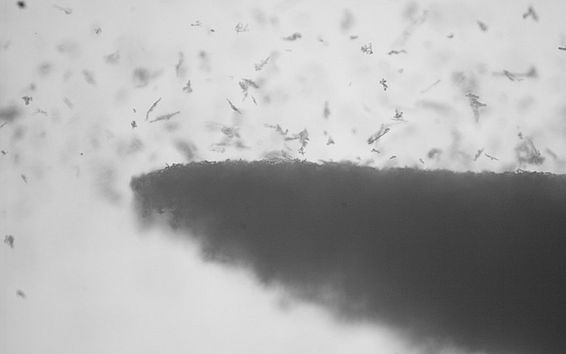
The research team therefore decided to bring the process to the SLF laboratory. Walter already has ideas about his future research, based on the results. "As one of the main meteorological factors, temperature will also affect how cornices are formed," he predicts. Therefore, one possibility would be to vary the temperature at a constant wind speed and so work out the ideal wind speed for the formation of a cornice at different temperatures. Another would be to manipulate the obstacle. "The shape of the ridge model is likely to be another, critical factor," notes Walter.
Contact ¶
Links ¶
- Wind tunnel at the SLF (german only)
Publications ¶
Yu H., Li G., Walter B., Lehning M., Zhang J., Huang N. (2023) Wind conditions for snow cornice formation in a wind tunnel. Cryosphere. 17(2), 639-951. https://doi.org/10.5194/tc-17-639-2023 Institutional Repository DORA
Copyright ¶
WSL and SLF provide the artwork for imaging of press articles relating to this media release for free. Transferring and saving the images in image databases and saving of images by third parties is not allowed.
